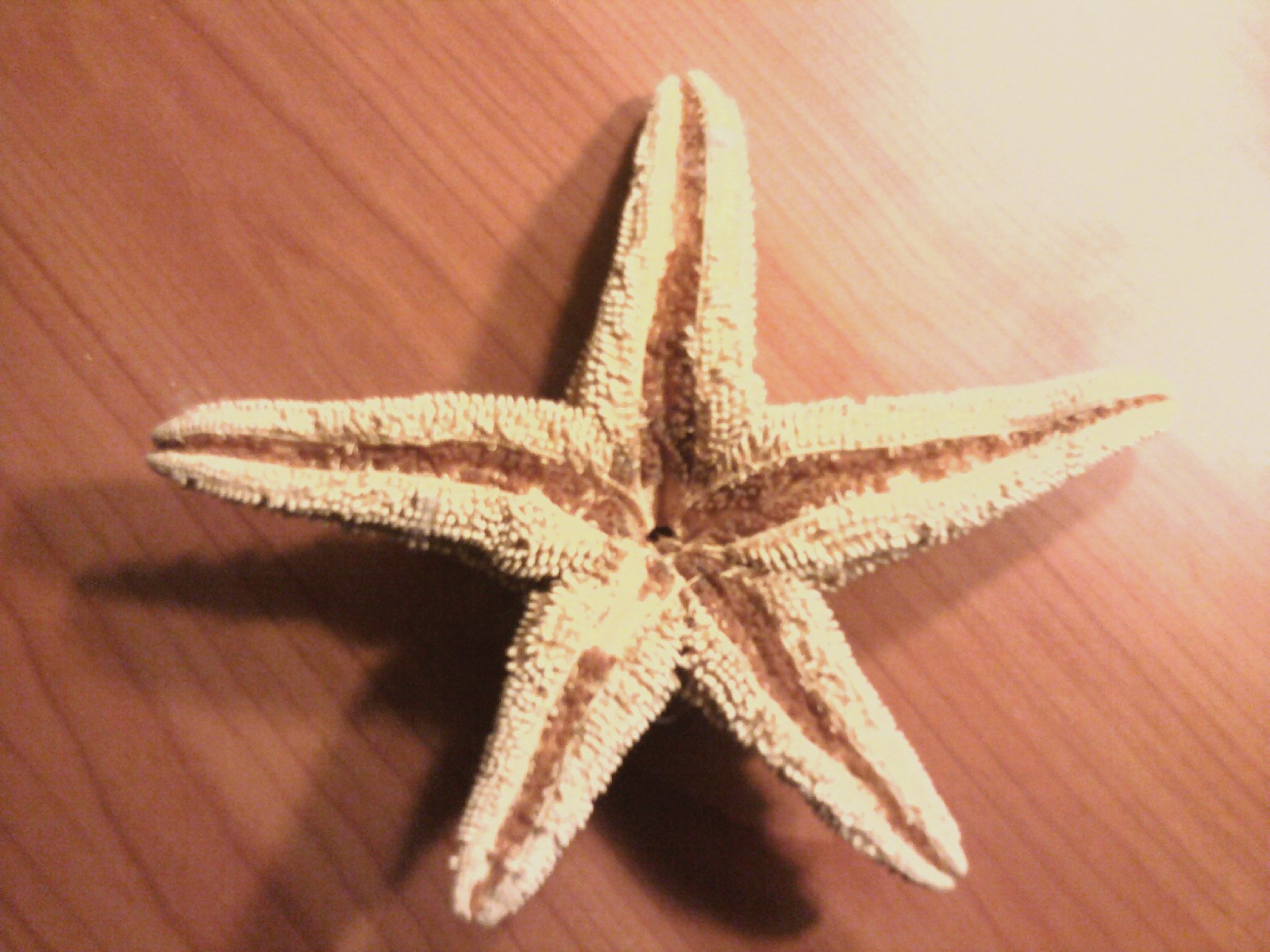Echinodermata, asteroide
From marinelife1011
The Sea Star {{Taxobox | name = Sea Star | phylum = Echinodermata | Class = Asteroidea
Contents |
Description
Sea Starare related to brittle stars, sea urchins, sea cucumbers, and sand dollars. They have five arms (rays) connected to a round body. Sea Star are part of a group called echinoderms which means "Spiny Skin." Sea Star also widely known as "Starfish" have five puple eyespots at the end of each ray and a bright orange dot in the center called teh madreporite. Madreporite pump water into the body creating a suction at the end of the tube feet which can be seen in rowns on the underside of each ray. The most interesting thing about Sea Star is their ability to regenerate or grow limbs back. If a Sea Star is threatened by a predator then it can choose to drop that arm in order to get away. The interesting thing is that Sea Star house many of their vital organs in their rays so if one does drop off not only can that starfish regenerate another arm, but the arm can regenerate a completely new Sea Star. It is known that there are over 1800 verieties of starfish living today.
Range
Sea Star can be found manly on the bottom of the sea floor. It lives anywhere from small holes left by other creatures in rocks and coral reefs. Many starfish can be found on coral because it a food source for them. Many Sea Star can be found in the tropical pacific areas such as australia. Even here in washington in cold-temperate water and even in alaska yoiu can find star fish. The Sea Star like many Echinoderms have a delicate internal balance so none will be found in freshwater or within teh water column.
Diet
Most Sea Star are generalist predators, many eating mollusks like clams, oysters, snails, and any other animal that cannot evade a Starfish attack. Some eat dead, decomposing animals and plants. Others consume coral, sponges, even plankton. The way a starfish will divour shellfish is by using its feet to grasp and prie open the shell by wearing out the adductor muscle then inserting its stomach into the shell to eat the the contents of the shellfish.
Nervous System
Starfish have a complext nervous system, but lack a centralized brain. Starfish have interlacing nerves called nerve plexus which lie within and beneath the skin. The esophagus is also surrounded by a central nerve ring which sends radial nerves into each of the arms, often parallel with the branches of the water vascular system. The ring nerves and radial nerves coordinate the sea star's balance and directional systems.Although the echinoderms do not have many well-defined sensory inputs, they are sensitive to touch, light, temperature, orientation, and the status of water around them. The tube feet, spines, and pedicellariae found on sea stars are sensitive to touch, while eyespots on the ends of the rays are light-sensitive. The tube feet, especially those at the tips of the rays, are also sensitive to chemicals.
Reproduction
Sea Star reproduce by releasing their gametes into the environment. The fertilized eggs from part of the zooplankton however some brood their eggs by sitting over them or in some have specialized brooding baskets on their aboral surface. One species of sea star is known to actually brood the eggs inside of the stomach. Most eggs are relatively large and supplied with yolk. Generally eggs develop directly into miniature starfish, without a larval stage. You will see that brooding in starfish is more common with polar and deep sea species.
Threats
Beside the natural threats that endanger the lives of starfish such as marine birds and other things that eat sea stars. Many outside human influences are threaten the lives of starfish. Right now polution and human activity destroy reefs that take 100's of years to construct biologically are not only a a food soarce for the starfish but brings in food sources for them as well. This means that things like pollution are killing many marine animals not just the sea star. However when a sea star eats a clam or other shellfish that it has been known to prey on, it is very lucky to live if the the shellfish have a high concentration of toxins in its system.
References
Kennedy, Jennifer. "10 Facts About Starfish - Starfish Facts." Marine Life - Ocean Animals, Plants and Habitats. Web. 26 Feb. 2011. <http://marinelife.about.com/od/invertebrates/tp/seastarfacts.htm>.
"Sea Star." URI's Environmental Data Center. Web. 26 Feb. 2011. <http://www.edc.uri.edu/restoration/html/gallery/invert/sea.htm>.
"Starfish." Angelfire: Welcome to Angelfire. Web. 26 Feb. 2011. <http://www.angelfire.com/ak2/mysticconnection/aa/starfish.html>.
"Starfish." Wikipedia, the Free Encyclopedia. Web. 26 Feb. 2011. <http://en.wikipedia.org/wiki/Sea_star>.

